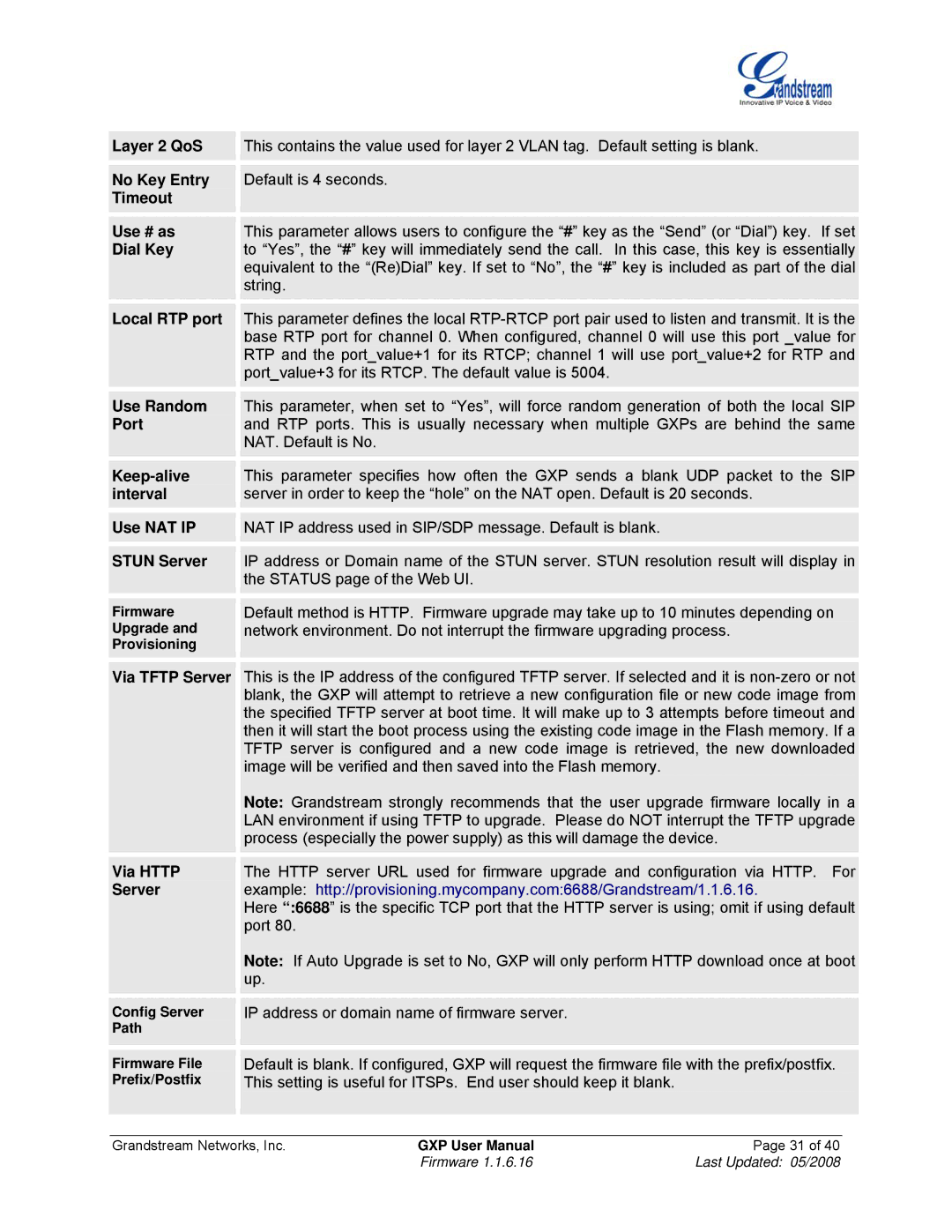
Layer 2 QoS
No Key Entry Timeout
Use # as
Dial Key
Local RTP port
Use Random Port
Use NAT IP
STUN Server
Firmware
Upgrade and
Provisioning
Via TFTP Server
Via HTTP
Server
Config Server Path
Firmware File Prefix/Postfix
This contains the value used for layer 2 VLAN tag. Default setting is blank.
Default is 4 seconds.
This parameter allows users to configure the “#” key as the “Send” (or “Dial”) key. If set to “Yes”, the “#” key will immediately send the call. In this case, this key is essentially equivalent to the “(Re)Dial” key. If set to “No”, the “#” key is included as part of the dial string.
This parameter defines the local
This parameter, when set to “Yes”, will force random generation of both the local SIP and RTP ports. This is usually necessary when multiple GXPs are behind the same NAT. Default is No.
This parameter specifies how often the GXP sends a blank UDP packet to the SIP server in order to keep the “hole” on the NAT open. Default is 20 seconds.
NAT IP address used in SIP/SDP message. Default is blank.
IP address or Domain name of the STUN server. STUN resolution result will display in the STATUS page of the Web UI.
Default method is HTTP. Firmware upgrade may take up to 10 minutes depending on network environment. Do not interrupt the firmware upgrading process.
This is the IP address of the configured TFTP server. If selected and it is
Note: Grandstream strongly recommends that the user upgrade firmware locally in a LAN environment if using TFTP to upgrade. Please do NOT interrupt the TFTP upgrade process (especially the power supply) as this will damage the device.
The HTTP server URL used for firmware upgrade and configuration via HTTP. For example: http://provisioning.mycompany.com:6688/Grandstream/1.1.6.16.
Here “:6688” is the specific TCP port that the HTTP server is using; omit if using default port 80.
Note: If Auto Upgrade is set to No, GXP will only perform HTTP download once at boot up.
IP address or domain name of firmware server.
Default is blank. If configured, GXP will request the firmware file with the prefix/postfix. This setting is useful for ITSPs. End user should keep it blank.
Grandstream Networks, Inc. | GXP User Manual | Page 31 of 40 |
| Firmware 1.1.6.16 | Last Updated: 05/2008 |
